Camping in high winds can be a bit nerve wracking, especially if you’re hoping a strong gust doesn’t pickup and toss your tent like a plastic bag.
Just like homes that survive hurricane-force winds, some tents are better designed to handle strong winds. There are also many ways you can prepare your tent during set up to keep it firmly planted on the ground.
So, let’s talk about high winds, how they impact a tent and what you can do to improve your tent survivability in these conditions while camping.
Article Contents:
Tent Wind Speed Limit
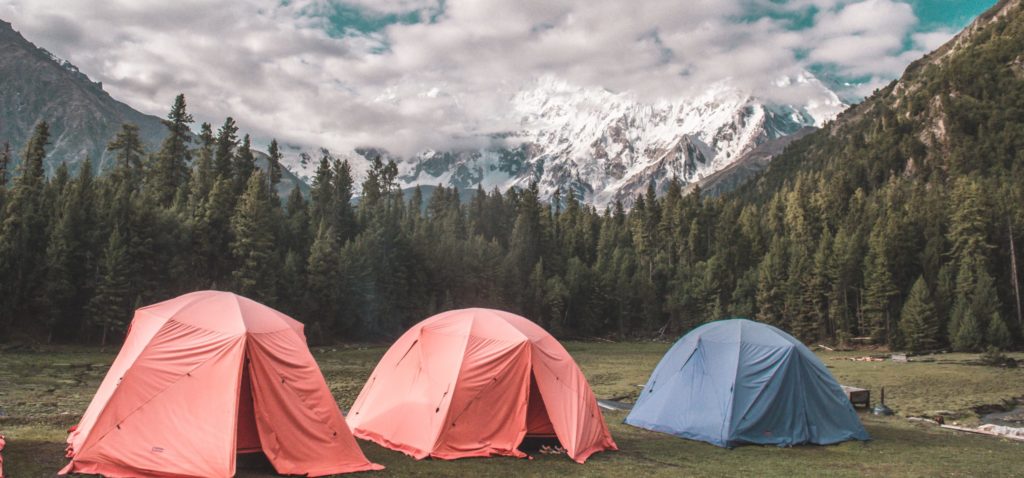
Tents are meant to be a safe refuge for campers in stormy conditions. However, high winds can wreak havoc on a tent’s structural integrity.
- Prolonged exposure to high winds can stretch a tent fabric to its breaking point and cause tent poles to buckle or snap.
Just like any structure or obstacle, natural or man-made, there’s a finite limit to the wind speed a tent can withstand.
So, what’s the wind speed limit of a tent? Well, tent wind speed ratings vastly differ for each tent model.
- Most tents are rated for wind speeds of 40 to 50 km/h (25 to 31 mph). This is equivalent to a force of 6 on the Beaufort Wind Scale (i.e., large branches in motion, umbrella use is difficult).
Personally, I own and use Coleman, Marmot and North Face tents.
- My Marmot Twilight 2P tent has weathered sustained winds of up to 50 km, and even higher wind gusts.
- Coleman WeatherTec™ rating system tents are rated for wind speeds of up to 56 km/h (35 m/h).
- The North Face Geodesic dome tents are rated for wind speeds up to 60 km/h!
In short, when you’re purchasing a tent, make sure you double check its wind speed rating if it has one.
Tent Design Considerations for Wind
There are a few key design factors that influence how resilient a tent is to high winds, specifically fabric strength, tent shape and the number of anchor points. Set up configuration and natural wind blocking features also contribute to a tent’s robustness.
Pro-tip: If your tent becomes damaged, check out How to Repair a Damaged Tent for step-by-step instructions.
Tent Fabric Strength
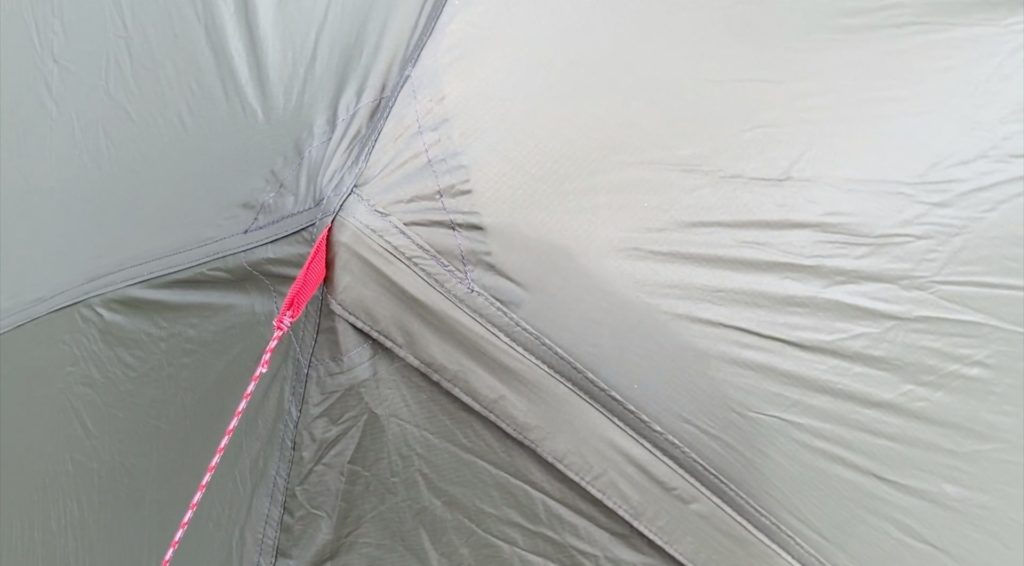
A tent’s resistance to tearing under heavy wind loads boils down to two aspects – fabric type and denier. I have a detailed explanation here, but I’ve summarized the key information below.
The two most common tent fabric types are nylon and polyester.
- Nylon and its variants are typically high strength and lightweight.
- Polyester and its variants are more durable.
Denier is a measure of the diameter of an individual thread in a fabric.
- Larger diameter, high denier threads, are stronger than thinner denier values.
Pro-tip: For camping in high winds, I would recommend a tent made from nylon with a denier of 60D or above.
Tent Shape
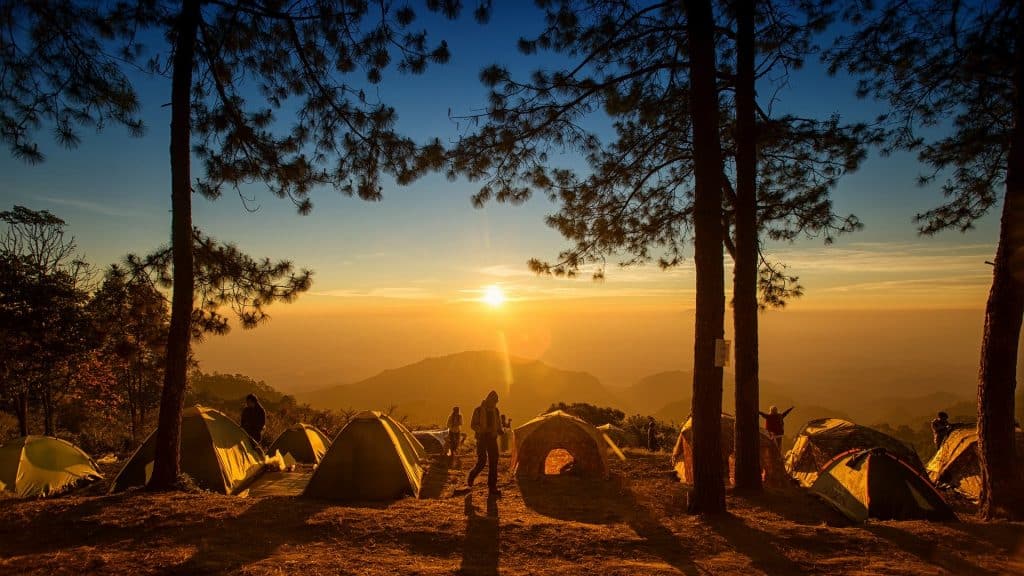
Tent shape has a massive influence on its ability to handle windy conditions.
In general, tents come in 4 distinct shapes or styles – cabin, dome (geodesic), pyramid (teepee), and tunnel (log). These shapes have different aerodynamic properties, which help or hinder a tent’s wind resistance.
Cabin tents have flat, square sides that catch the wind easily. This large amount of exposed surface area places a considerable force on the tent structure.
- Cabin tents can not effectively deflect or dissipate wind forces, which leads to a lower overall wind rating and higher susceptibility to failure.
Dome tents, also known as geodesic tents, are very good at deflecting and redistributing wind load to the entire tent structure.
- The curve shape helps to angle wind forces around the structure no mater the direction.
Pyramid or teepee shaped tents have a tapering upward surface area.
- The shape catches less wind and deflects wind around the structure effectively.
- The wide base compared to small roof section also ensures minimal transfer of wind load to the anchor points.
Tunnel or log style tents are shaped non-symmetrically and have the option to be placed parallel to the predominant wind direction.
- This helps to minimize the surface area perpendicular to the wind.
- Think of it as a canoe facing into the wind versus perpendicular. Obviously, facing the bow of the canoe, which has the smallest surface area, into the wind direction is better from an aerodynamic perspective.
3 Simple Tent Set Up Tips for Windy Conditions
1. Utilize All Anchor Points

There’s a reason why all tents come with ground stakes and additional anchor points built into the tent body – It’s all to help keep it from flying off from a wind gust to the Land of Oz.
Well, to keep your tent in Kansas (and on solid ground) during especially windy conditions, its very important to utilize all tent anchor points. This includes hammering ground stakes into all corners of the tent base – use all those base loops!
Additionally, utilize all the built-in tent guy lines.
- Guy lines provide structural support for the top section of a tent.
- Guy lines add stability by imparting tensional load transfer from the tent frame into the grounded anchor points.
Overall, a well anchored tent can withstand greater wind forces.
2. Optimize Tent Set Up Direction
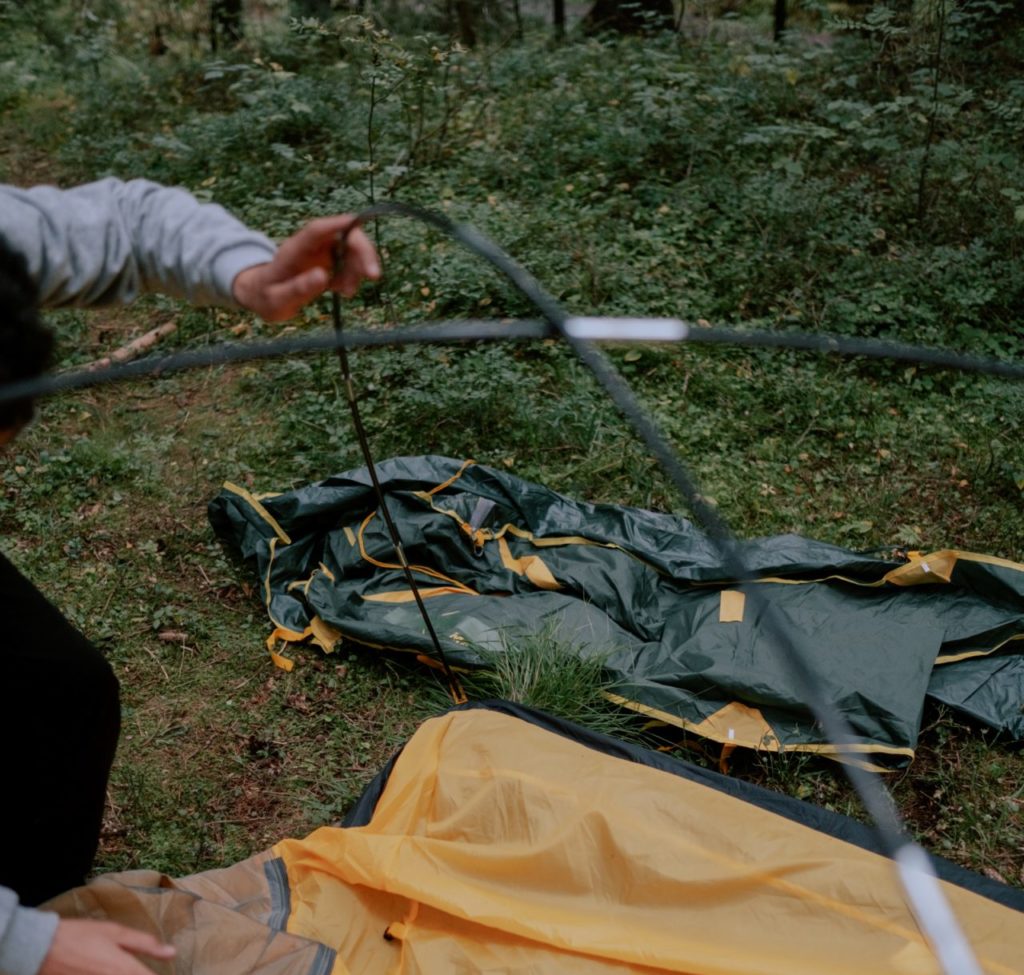
Before setting up your tent, it’s a good idea to take note of the predominant wind direction.
Then, as you set up your tent, you can position the smallest cross-sectional area of the tent towards the wind to reduce the influence of the wind.
Likewise, tent rainfly covers can be positioned to deflect wind away from the tent body instead of catching the wind and acting as a sail.
3. Utilize Natural Wind-Blocking Features
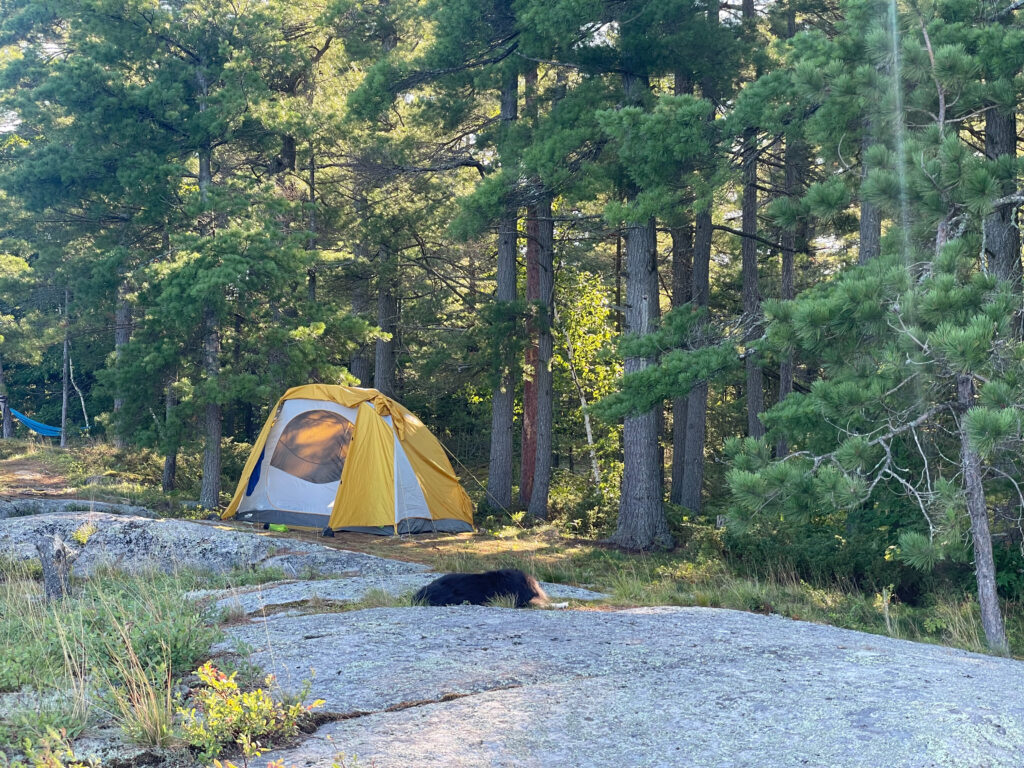
Camping on a mountain ridge, in front of a large lake, or in an open valley might seem fine at first. But, these natural features tend to funnel wind and expose you to higher wind speeds.
Rather, look to set up your campsite amongst natural features that block or suppress the wind.
- Camp on the leeward side of a mountain – the side that faces away from the prevailing winds.
- Trees help dissipate wind energy. Camping in dense forest will ensure the wind’s influence is minimized.
- Rock features, such as large boulders and caves, can be utilized to block or shelter from high winds.
- Vehicles can lessen the impact of wind, as well as provide anchor points for tent guy lines.
This article contains affiliate links, which help support this blog at no cost to you!
